 A' Design Award Intellectual Property Overview A' Design Award Intellectual Property Overview
When participating in the A' Design Award, understanding intellectual property (IP) is crucial. Whether it is photography, illustrations, graphics, renders, sound design, branding, patents, collaborative projects, software, or artworks, each medium comes with its own IP considerations. As a creator, ensuring you own the rights to your submitted materials safeguards you from potential legal disputes and ensures the integrity of your work. For both individuals and companies, it is essential to be proactive, acquire proper licenses, secure rights, and understand the nuances of IP for each medium. This not only protects your creations but also preserves the reputation of the A' Design Award platform.
In the limelight.
In this page, we explain why we give attention to IP, then provide you with some definitions, then proceed with some tips and tricks to get a better understanding of the patents, trademarks, copyrights, intellectual properties, our license and declarations as well as our services, namely Concealed Categories and Proof of Creation, designed to help you with your intellectual properties and copyrighted content, to a degree; but not to replace a legal registration, as explained in this page. We will also provide you with some warnings about photography and provide you tips and tricks to how to work with photographers, illustrators, creators, artists and designers to have required legal rights and licenses to be able to use, incorporate and sublicense their creations and original work. Overall, the final purpose of these guidelines is to help you have a starter understanding of Intellectual Property guidelines, why we care, and what you should know to take part. We also remind you in this page that when you join A' Design Award, you keep your design rights.
Keep Your Copyrights and Patents: A' Design Award lets you keep and retain your copyrights and patents, respects your IP rights, data privacy, and offers Concealed Categories for confidential, patent-pending designs and trademarks. The A' Design Award explicitly allows you to retain full ownership of your copyrights and patents. Winning the A' Design Award does not assign your patents or transfer your copyrights to us. Instead, you grant A' Design Award a worldwide, perpetual, royalty-free license solely to publish and promote your winning work, and in return, if you are a winner of Professional and Digital Edition entry, we grant you same powerful worldwide, perpetual, royalty-free license to use our Award Winner Logo. You remain the rightful owner of your designs and patents, we respect your IP.
For a comprehensive understanding, we urge all participants to thoroughly review our Intellectual Property Guidelines to have a basic, starter understanding of what Intellectual Properties are and how they matter when taking part in A' Design Awards. That being said, of course you should consult a trademark lawyer and intellectual property attorney, regardless, as information contained here is not legal advice. Ensure your work shines without legal shadows by hiring and working with legal intellectual property experts.

The tallest tree catches the most wind.
A' Design Award winners stand out; we do an immense marketing and pr campaign, promotion and advertising, thus bringing fame and prominence to you, making you important and seen, where larger issues or challenges might confront you, especially due to big exposure to the public eye, which in addition to immense positive attention may also bring some negative attention, especially from other creators who may lay claims to your IP.
Before we explain what is IP and why it matters, let's think about why do we place such emphasis on understanding and adhering to intellectual property protocols? Because the mission of A' Design Award is to create a global understanding and appreciation for good design, to promote great designers, architects and brands and their work; to motivate them to create superior products and projects that benefit and advance society, and we put a lot of effort into this promotional campaigns, therefore at the very core of the A' Design Award ethos is the commitment to authenticity, respect for creators, and outstanding promotion of groundbreaking designs and ideas on a global scale. With our winners receiving widespread recognition and their works being translated and published in numerous languages across various publications, the potential for misuse and misrepresentation grows exponentially.
Many platforms might not delve deep into these intricacies about IP, possibly because their reach is not as vast, or maybe they don't prioritize creators' rights to the same extent. After all, if a tree falls in a forest and no one is around to hear it, does it make a sound? Similarly, if a creator's work isn't properly recognized, amazingly advertised and excessively promoted, is it truly being valued? When you win A' Design Awards, it is our aim to advertise you as much as you can, because that helps us achieve our goal; promoting good design, and when we advertise it so much, we get so much attention and legal correspondances start coming; people see your work, and if it has issues, complains start coming, this becomes urgent when such complaints tarnish our relationship with our esteemed media partners, thus this guidelines exists to help us make your design presentations super clean (from a legal perspective, clean of disputes) such that we can market and promote your work even more.
With great power comes great responsibility
The A' Design Award recognizes that with great visibility comes great vulnerability. Our stringent intellectual property protocols aren't just about ticking boxes; they're about first of all enabling us to promote your work to the maximum extent we can, and of course it is also very much about preserving the integrity of the creations showcased and protecting the rights of those who've poured their heart and soul into their work. We wish to first be able to promote your work everywhere freely, to help your work reach great heights, to provide you with fame, prestige and international publicity, and then of course we wish to set a standard, a benchmark, for how awards and platforms should respect and protect the rights of creators. In an age where digital replication is easy, and where imitation can sometimes be mistaken for flattery, we take a stand to ensure that recognition doesn't come at the cost of originality, and in an age where it is easy to fill digital disputes and complaints we want to be armed to teeth and ready to protect your interests; when we receive a copyright claim or complain, we want to stand firm with your designs; so we want to teach you the secret art and forbidden teachings of intellectual property protection for your own good.
With great power comes great responsibility
Our rigorous approach to intellectual property might seem excessive to some, especially when compared to other awards that may not delve deep into this realm. But this thoroughness is what sets us apart. It ensures that every creator, artist, and designer associated with the A' Design Award can confidently and proudly showcase their work as a winner of an award where originality is respected, knowing that their work won an award where only original designs are allowed to compete, where original creators, designers, architects, brands and innovators are respected for their novel creations and innovations. And for our audience and partners, teaching designers about IP and forcing the designer's design presentations to be clean from IP disputes, makes them understand that what they are witnessing is genuine, original, and worthy of the accolades it receives. So, while the path we hae chosen might be less traveled, it is a testament to our unwavering commitment to authenticity and respect for the creative process and our desire to really market and promote your work.

Patents, Intellectual Property, Copyright, Trademark
Before we start, we would like to provide you with a few definitions. Understanding these distinctions is crucial when determining how best to protect your creative endeavors or inventions. It ensures that you seek the right type of protection for your intellectual assets and provide A' Design Awards with clean content ready for legal global distribution and promotion.
- Intellectual Property (IP):
Intellectual Property refers to creations of the mind such as inventions, literary and artistic works, symbols, names, images, and designs used in commerce. It is an umbrella term that includes various rights like patents, copyrights, trademarks, trade secrets, and more.
- Patents:
A patent is a legal right granted for an invention. It provides the patent holder exclusive rights to the invention for a limited period, typically 20 years. In exchange, the inventor provides a detailed public disclosure of the invention.
- Copyright:
Copyright is a legal right that grants the creator of an original work exclusive rights to its distribution and reproduction. This might include literary, artistic, and musical works. Copyright does not protect ideas but rather the expression of ideas.
- Trademark:
A trademark is a recognizable sign, design, or expression that identifies products or services of a particular source from others. It ensures that consumers can distinguish between products and services of different origins.
These terms, Intellectual Property, Patents, Copyright, Trademark are often confused with each other. Let's compare them to have a better understanding:
- Copyright vs Patents:
While both are forms of intellectual property protection, copyrights cover the expression of ideas (like books, music, and art), whereas patents protect new inventions or processes, especially products.
- Copyright vs Trademark:
Copyright protects original content like books, songs, and movies, while trademarks protect brand identifiers like logos, brand names, and slogans.
- Copyright vs Intellectual Property:
Copyright is a type of intellectual property that protects original works of authorship. Intellectual Property, on the other hand, is a broader term that encompasses copyrights, patents, trademarks, and more.
- Trademark vs Patents:
Trademarks protect brand identifiers (like logos and slogans) ensuring that consumers can identify the source of a product or service. Patents protect inventions and processes for a certain period.
- Trademark vs Intellectual Property:
Trademark is a form of intellectual property that protects brand identifiers. Intellectual Property covers a range of rights including copyrights, patents, trademarks, and others.
- Patents vs Intellectual Property:
Patents are a specific type of intellectual property right that protects inventions and processes. Intellectual Property is the broad category that includes various rights such as patents, copyrights, trademarks, and more.
A' Design Award - Proof of Creation for Copyrights
Understanding the nuances between different types of intellectual property rights is essential for creators and inventors. One of the notable distinctions is in how these rights are secured. Copyrights come into existence automatically as soon as an original work is created and fixed in a tangible medium, such as when an author writes a novel or a musician records a song, therefore if you are an artists, and you create art, you should have automatic copyright without doing anything extra. This means you, as a creator, do not need to take any specific action to obtain copyright protection, however it often can become hard to prove that you are the creator. The A' Design Awards provides you with Proof of Creation service, free of charge to help you demonstrate that you were the original creator and author of your artistic work.
A' Design Award - Concealed Categories for Products and Innovations Not Yet Patented
Patents, which protect inventions and innovative processes, are not automatically granted. Inventors must go through a rigorous application process, which includes submitting detailed descriptions and claims about their invention to a patent office. Only after thorough examination and approval is a patent granted, providing exclusive rights to the inventor for a limited period. Within this context, it is good to know that participation in design awards can be a double-edged sword for innovators and creators. On one hand, awards can offer great exposure and recognition for novel designs, potentially catapulting a product to commercial success. On the other hand, publicly showcasing a design before patenting it may jeopardize its eligibility for patent protection in many jurisdictions, which often require the invention to be novel and not previously disclosed to the public. The A' Design Awards recognize these challenges faced by designers, by offering a feature known as Concealed Entry allowing you to submit your designs in a confidential manner where results are not public, thereby preserving the novelty of the product. This way, designers and brands can still aspire for recognition without compromising their ability to secure patent rights in the future. Within this context, you should know that, there is always possibility of a leak, by jurors, by government requests etc, as such you should patent your works always in advance when possible.

Do you really have "all the rights" to the images you submit?
What does it mean to have all the rights to your images? Ask yourself these questions; can I use my work free of charge, can I license it? Of course if it is your own work you can, but what if you already sold it? What if you asked a professional photographer to take your image? What happens then?
In this page we will discuss about a license, and when you come across the term "perpetual, worldwide, sublicensable, unlimited, free-to-use license" for a photograph, it encompasses a comprehensive set of rights and privileges granted to the license holder. Let's break down what each of these terms means in the context of a photograph or any other intellectual property:
-
Perpetual: This means that the license has no expiration date. Once granted, the license lasts indefinitely and doesn't need to be renewed. So, if you're given a perpetual license for a photograph, you can use it forever without worrying about any time limitations. AKA For any duration: This suggests that there's no time limit for how long you can use the photograph in a particular project or context.
-
Worldwide: A worldwide license allows you to use the photograph anywhere in the world. This is particularly important in the digital age, where content can be accessed and shared globally. With this license, there are no geographic boundaries or restrictions on where the photograph can be displayed or utilized.
-
Sublicensable: This permits the license holder to grant sublicenses to others. In other words, if you have a sublicensable license, you can authorize third parties to use the photograph under the same terms you've been granted, without requiring the original licensor's direct permission every time.
-
Unlimited: This often refers to the scope and frequency of use. With an unlimited license, you can use the photograph as many times as you want and in as many different projects or contexts as you deem fit. There are no restrictions on the number of reproductions or the platforms where the photograph can be used.
-
Free-to-use: This indicates that you don't have to pay additional fees or royalties every time you use the photograph. Once you've obtained the license, there are no subsequent costs associated with using the photo, regardless of how often or widely it's used.
-
Unlimited Copies: This would mean that the license holder has the right to produce and distribute an unlimited number of copies of the photograph. Whether it's in printed materials, digital reproductions, or any other form, there are no limits on the quantity of reproductions that can be made.
-
Right to Make Modifications: This grants the license holder the authority to alter, adapt, or modify the photograph. This can include cropping, changing colors, adding elements, combining it with other images, or any other form of alteration. It's essential to specify this right explicitly if you intend to allow such modifications, as some licenses might only permit the use of the original image without changes.
-
Use for any purpose: This indicates that the license holder can use the photograph for any conceivable purpose, be it commercial, editorial, personal, educational, or any other potential use. There are no specific constraints on how the image can be employed.
-
Non-exclusive: A non-exclusive license means that the licensor can grant the same or similar rights to others. Therefore, multiple entities or individuals might have the same rights to use the photograph, and the original owner (licensor) retains the right to use it as well.
-
Without attribution requirement: You are not required to credit the original creator or licensor of the photograph when you use it. This is in contrast to some licenses which demand that the original creator be credited whenever the work is used or displayed.
-
Without limitation for resolution: The photograph can be used in its highest quality/resolution, and there are no restrictions to downscale or reduce its quality for usage.
-
In all media: The license holder can use the photograph across different media platforms—be it digital, print, television, or any other medium.
-
Unrevokable: This means that once the license is granted, the licensor cannot take it back or terminate it under normal circumstances. The rights given to the license holder are permanent and cannot be rescinded.
-
Commercial Rights: Granting commercial rights to the license holder means that they are permitted to use the photograph in ways that might generate profit, revenue, or any form of business advantage. This could include using the photograph in advertisements, merchandise, marketing campaigns, and other revenue-generating activities. Without this explicit permission, the licensee might be restricted to non-commercial uses like personal projects or academic presentations.
- Warranties: This section often stipulates that the licensor has the right to grant the license and that the content (in this case, the photograph) doesn’t infringe on the rights of any third party. It might also include assurances about the quality or authenticity of the photograph.
Of course, then in your license you shall consider.
-
Liability: This clause specifies who would be responsible if something goes wrong, like if someone sues because the photograph violated their rights or if the photograph causes harm in some way. It often limits the licensor's liability or sets a cap on potential damages.
-
Audits: This provision can be important in licenses that have royalty payments or certain compliance requirements. It allows one party (often the licensor) to audit the other party's records to ensure they're adhering to the terms of the license, like paying the correct royalties or using the photograph only in approved ways.
-
Indemnities: This is related to liability. It's where one party agrees to compensate the other for any losses incurred due to legal claims against the content. For instance, the licensor might indemnify the licensee against any third-party claims that the photograph infringes on their rights.
-
Termination: Even with a perpetual license, there might be conditions under which the license can be terminated, like if the licensee breaches the agreement.
-
Governing Law & Jurisdiction: This part determines which jurisdiction's laws will be applied in interpreting the license and where any legal disputes would be settled.
-
Confidentiality: In some licensing agreements, especially if unpublished or proprietary content is involved, there may be clauses that prevent the licensee from disclosing certain details or aspects of the content.
The easiest solution is not to have a license; if you are the original photographer, you do not need such a license from the photographer. If you are a company, if you hire your photographer legally, if you can demonstrate the photographer is working for you full time or part time, with valid contract, then you already own the work and thus do not need to have such a license; you are the license!
Here, we are touching upon an important principle in intellectual property law known as the "work for hire" doctrine. Here's a more detailed breakdown of the concept:
Work for Hire: When a work is made for hire, the employer or party commissioning the work, not the creator, is considered the legal author of the work. Consequently, the employer/party holds the copyright and all associated rights to the work.
There are generally two scenarios where a work is considered "made for hire":
-
Employee-Employer Relationship: If a work is created by an employee within the scope of their employment, then the work is usually owned by the employer. This means if a company hires a photographer as a full-time or part-time employee and their job description includes taking photographs, then those photographs would typically be considered the property of the company.
-
Specific Commissioned Works: If the work is specially ordered or commissioned for use as a contribution to a collective work, as part of a motion picture, or other specified categories, and the parties expressly agree in writing that it will be a "work made for hire", then the work is owned by the party that commissioned it.
However, there are a few caveats to keep in mind:
-
Clear Contracts: Even though the "work for hire" doctrine is recognized, it's still essential to have clear contractual agreements in place. A well-drafted contract eliminates ambiguities and potential disputes over ownership rights.
-
Freelancers & Independent Contractors: If a company hires a freelance photographer or an independent contractor, the "work for hire" principle may not automatically apply. In such cases, it's crucial to have a written agreement that the work will be considered a "work made for hire" or that all rights to the work are transferred to the company.
-
International Differences: Copyright laws vary from country to country. What's considered "work for hire" in one jurisdiction may not be recognized the same way in another. It's crucial to be aware of local laws and regulations.

Understanding Intellectual Property in Photography for the A' Design Awards Entry
As you prepare to showcase your designs through the A' Design Award platform, it's crucial to understand the significance of the photographs representing your work. The images you submit are not just visuals but intellectual assets with potential legal implications.
For Individuals: If you're considering professional photography, it's a wise choice. However, be aware of the rights tied to those photos. While a photographer can offer expertise in capturing your work, they, by default, own the copyrights. This means, without proper arrangements, not you but your photographer retain the rights to the images and can potentially challenge your use of them in the future. For more security, you might: Take the photographs yourself. This ensures you have complete rights.
If you're not the one clicking the shutter, set the camera and ask a trusted friend or relative to capture the image.
If hiring a professional, ensure you receive a "perpetual, worldwide, sublicensable, unlimited, free-to-use license" that allows modifications if needed, and that allows you to reproduce unlimited copies, in any medium; you should really have a good license.
For Companies: Hiring photographers as official company employees can be beneficial. Any work they produce during their tenure will naturally belong to the company. This provides a clear delineation of intellectual property rights and safeguards against future disputes.
The Risks of Overlooking Rights: Recent incidents have highlighted potential legal disputes arising from image rights. Photographers, having not granted explicit rights for the images' use, have sought legal remedies. This not only creates complications for you but also for us as a platform, showcasing your designs to a broad audience, including the press. The biggest impact occurs when press members featuring your works get copyright disputes, which results in removal of your feature and hurts us deeply.
Investing in Quality and Rights: Your designs deserve to shine, and quality photography is a pivotal part of that. Investing in good photographs is investing in your image. But, it's equally essential to invest in the rights tied to those photos, ensuring you can use them freely today and in the future.
Rights of Third Parties: Are there people in the photograph? If so, do they have model releases? What about recognizable properties or landmarks?
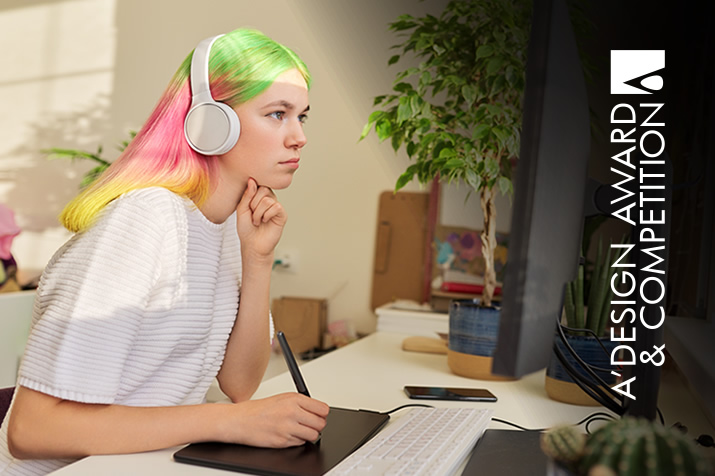
Understanding Intellectual Property in Illustrations for the A' Design Awards Entry
For Individuals: Illustrations, much like photographs, are original works that are protected by copyright as soon as they are created. Here's how to ensure you have the rights: Draw and create the illustrations yourself to maintain full rights.
If commissioning an illustrator, make sure there is a clear contract in place that specifies you acquire all rights to use, modify, and distribute the illustration. Obtain
For Companies: Employ illustrators within your organization so that any illustration they create during their employment naturallybelongs to the company. Remember the Work for Hire doctrine.
The Importance of Authenticity: Just as with photographs, illustrations can be the subject of copyright disputes. Using someone else's illustrations without proper licensing can lead to hefty fines and damage to your reputation. Always ensure you have permission or a license to use any third-party artwork.

Understanding Intellectual Property in Graphics for the A' Design Awards Entry
For Individuals: Graphics, including logos, infographics, and icons, are covered by copyright laws. To secure your rights: Design graphics yourself.
When using graphic design software or platforms, ensure that the elements you incorporate are royalty-free or purchased with a license.
If hiring a graphic designer, ensure that the terms of your agreement state you will own the copyright to the finished product.
For Companies: Having in-house graphic designers ensures that all graphics created for company use are owned by the company, based on the Work for Hire doctrine.
Potential Pitfalls: Using generic or commonly used graphics can cause confusion and dilute your brand identity. Additionally, using copyrighted graphics without permission can lead to legal action.

Understanding Intellectual Property in Renders for the A' Design Awards Entry
For Individuals: 3D renders are increasingly becoming essential in showcasing design. To retain rights: Create renders yourself using software you have legally obtained.
If commissioning someone for rendering, ensure your agreement allows you to retain all rights to the finished renders.
For Companies: Consider having in-house designers or render artists, so any work they produce is company property.
Avoiding Render Reproductions: Remember, just as with other forms of art, copying or closely mimicking someone else's render without permission is a breach of copyright. Always strive for originality.
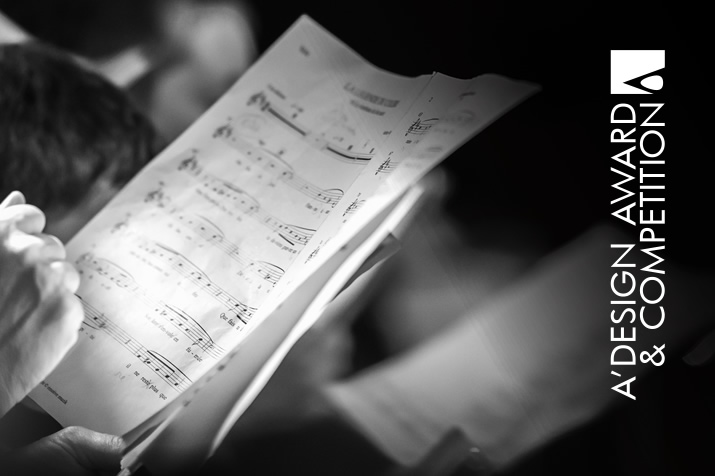
Understanding Intellectual Property in Music and Sound Design for the A' Design Awards Entry
For Individuals: If you're integrating custom music or sound effects into your design presentation, remember that audio, just like photographs, comes with its own set of copyright considerations.
Create Original Tracks: Composing your own music ensures you own the rights. Hiring a composer? Ensure rights transfer or a proper licensing agreement is in place.
Licensing: Many websites offer royalty-free music. When you buy these, you’re purchasing a license to use the music, not the music itself. Ensure the license is broad enough for your intended use.
For Companies: Just as with photography, having in-house music or sound design experts can help. Any piece they create for your presentations or products as employees usually belongs to the company. Always have a clear IP agreement in place for new hires.
Pitfalls of Ignoring Sound Rights: An overlooked music track can lead to infringement claims. Platforms like YouTube have automated systems that detect copyrighted music, which can result in your content being taken down, monetized by the copyright owner, or worse – legal action.
Balancing Quality with Legality: While high-quality music elevates your design's perception, always ensure the legality of your sound assets. Whether purchasing licenses or creating be

Understanding Intellectual Property in Branding and Trademarks for the A' Design Awards Entry
For Individuals: If you've crafted a unique brand identity, logo, or even a catchphrase for your designs:
- Trademark Registration: To protect your brand elements like logos, symbols, and names, consider registering them as trademarks. This provides legal rights preventing others from using anything confusingly similar.
- Research: Before settling on a brand identity, research to ensure no one else has prior claims to similar logos or names in your industry.
For Companies: A strong brand is an asset. Companies should have dedicated teams or resources to ensure all branding materials are unique and protected.
Consequences of Overlooking Brand IP: Using a logo or name similar to another brand, even unintentionally, can lead to legal battles. Rebranding due to legal disputes is costly, both financially and in terms of brand recognition.
Quality and Legality in Branding: Your brand represents you in the market. While it's crucial to have a compelling and memorable brand identity, it's equally essential that this identity is legally secure.

Understanding Intellectual Property in Patents and Prototypes for the A' Design Awards Entry
For Individuals: If your design involves a unique mechanism, method, or technology, it might be patentable.
- Patent Search: Before applying, conduct a thorough search to ensure no one else has patented a similar invention.
- Patent Application: Protect your invention by filing for a patent. While the process can be lengthy and sometimes costly, it prevents others from making, using, or selling your invention without your consent.
- Prototypes: Be cautious when showcasing prototypes, especially if they contain patentable features. Ensure non-disclosure agreements (NDAs) are in place if discussing with potential partners or investors.
For Companies: Companies should maintain a consistent approach to patenting innovations. Regularly review in-house developments to identify patentable technologies.
Risks of Overlooking Patent Rights: Failing to secure a patent can lead to competitors copying or adapting your unique design. It becomes more challenging to defend your rights if the invention is not patented.
Balancing Speed with Protection: While being the first-to-market has its advantages, ensure you don't rush and overlook protecting your intellectual assets.
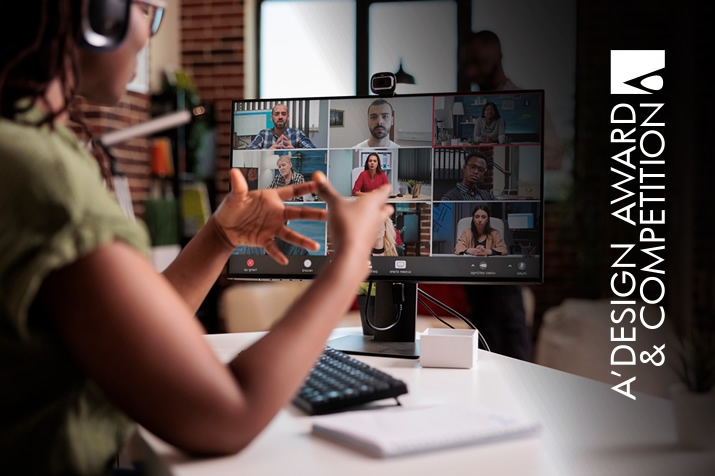
Understanding Intellectual Property in Collaborative Projects and Joint IP for the A' Design Awards Entry
For Individuals: If you're collaborating with others:
- Clear Agreements: Before starting, set clear terms on who owns what. This can include rights to the final product, underlying assets, and any profits or revenues generated.
- Document Everything: Maintain records of who contributed what. This can be invaluable if disputes arise later.
For Companies: When companies collaborate, the stakes are often higher. Comprehensive contracts detailing the collaboration's nature, the contributions of each party, and how IP will be shared or divided are essential.
Pitfalls of Ignoring Joint IP Rights: Collaborations without clear IP agreements can lead to messy disputes. One party might claim more rights than the other, leading to legal battles and strained relationships.
Harmony in Collaboration: The essence of collaboration is the synergy between parties. Ensuring clear communication, understanding, and legally sound agreements keeps this spirit intact.
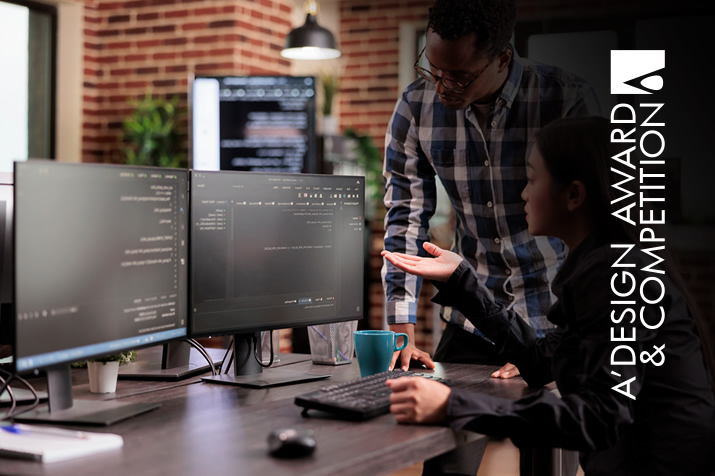
Understanding Intellectual Property in Software, Code and Digital Creations for the A' Design Awards
For Individuals: If you've developed software, an application, or even unique code snippets, these too have intellectual property rights associated with them.
- Copyright: Unlike patents, copyright protection arises automatically once the software or code is created and fixed in a tangible medium. This gives the creator exclusive rights to reproduce, distribute, perform, and display the software.
- Software Licensing: If you intend to distribute or share your software, consider the type of license. Open-source licenses, like the GNU General Public License (GPL), allow others to use, modify, and distribute your software, but with specific conditions. Proprietary licenses restrict the software's use, modification, and distribution.
For Companies: Software companies must have robust IP strategies, which include not only protecting their own IP but also ensuring they don't infringe on others'.
Risks of Neglecting Software IP: Without proper IP protections or clear licensing, software can be copied, modified, or even resold without the creator's permission. Additionally, using third-party code without a proper license can lead to infringement issues.
In the Digital Age, Prioritize IP: Given the ease with which digital products can be shared and replicated, safeguarding your software IP becomes even more paramount.

Understanding Intellectual Property in Artworks for the A' Design Awards Entry
For Individuals: Whether you create paintings, sculptures, digital art, or any other form of artistic expression, these creations are your intellectual property.
- Copyright: Artworks, like software, are automatically copyrighted when they're created and fixed in a tangible medium. This provides artists with exclusive rights over their works, preventing unauthorized reproductions or distributions.
- Reproduction Rights: If you wish to create prints or digital reproductions of your artwork, you have the sole right to do so. If others wish to reproduce, they must seek your permission.
For Companies: Companies dealing in art, whether producing or selling, should be aware of the copyrights involved. Unauthorized reproductions can lead to legal battles and damage to reputation.
Perils of Overlooking Artwork IP: Just as with other forms of IP, neglecting to assert your rights over your artwork can lead to unauthorized use, commercial reproductions, and lost income opportunities.
Value Beyond the Canvas: While the intrinsic value of art is often emotional and subjective, the associated IP rights have tangible value. Recognize and protect this to ensure your creations remain solely yours.
Good to Know: To ensure you have "all the rights" the way to go is create your own content whenever possible, and use Work for Hire doctrine when working with others. Remember; while the "work for hire" doctrine can simplify the ownership of creative works, it's always wise to ensure clarity with comprehensive contracts and be informed of local legal norms.

Documentation & Proofs for Design Originality
In the fast-paced world of design, innovation can sometimes be accompanied by unintentional overlaps in creativity. As a result, designers may find themselves in situations where the originality of their creations is challenged. The mere act of creation grants you copyright, but defending that right can sometimes demand more substantial evidence. Especially when you create a unique design with artistic value, the issue of ownership and originality often arises. While the copyright for original creations is inherent upon their making, ensuring its protection and proving its originality becomes paramount. This is especially important in a world where designs can be replicated easily and rapidly.
Traditional Chronological Documentation:
Always keep chronological documentation of your design process. Maintain sketches, drafts, notes, emails, and any other materials related to your design. This could serve as evidence should any disputes arise regarding the originality of your design.
Digital Time Stamps:
In the digital age, every file you save, every change you make, comes with a time stamp. Leveraging platforms that automatically record and backup versions of your work (like cloud storage or design software with history logs) can provide an automated yet solid proof of your work's progression.
Witness Testimonies:
Having discussions with colleagues, mentors, or even peers about your design can be beneficial. In situations where the authenticity of your work is under scrutiny, these individuals can act as witnesses. Their testimonies, backed by the chronological documentation, can further strengthen your case.
External Feedback and Peer Reviews:
Seeking feedback during your design process isn't just great for improving your work; it also adds to your proof pool. When you share drafts or prototypes with others for feedback, their responses and your subsequent iterations based on that feedback can act as tangible milestones in your design's development. However if you share your work publicly you may lose your chance to patent it. Consider joining A' Design Award's concealed categories for works that you did not patent yet.
Registration with Design Bodies:
While not mandatory, registering your design with recognized design bodies or associations can offer an additional layer of protection. These registrations often come with their own set of time stamps and verifications, adding another layer of credibility to your creation's originality. You will be happy to learn that we provide "Proof of Creation Service" to you, free of charge.
Proof of Creation Service by A' Design Award & Competitions:
A' Design Awards provide a unique service for designers to help them document their creation, this service is called Proof of Creation and is provided free of charge to our laureates. Here's how it works and why it can be beneficial:
-
Utility:
The "Proof of Creation" helps designers prove that they created a particular design on a specific date. This could be invaluable in situations where a third-party claims a design or registers it under their name.
-
How it Enhances Traditional Proofs:
While traditional documentation provides a history of your design process, the "Proof of Creation" offers a third-party attestation of your claim. This is strengthened by the involvement of two witnesses and the use of a time-stamp that cannot be reproduced, such as a post office stamp.
-
Services Offered:
A' Design Award provides a "Proof of Creation" template which designers can print and fill. They also offer a depository service where they archive your proof for a potential duration of five years, bolstering its legitimacy.
-
Cost:
This service is complimentary for A' Design Award participants. However, postage and stamping fees might apply when sending your proof.
-
Application and Retrieval Process:
Designers can access and print the "Proof of Creation" template from their control panel. Once filled and signed by two witnesses, the designer needs to mail one copy to A'Design Award and another to themselves. The document sent to A'Design Award will be archived and marked as "Received and Archived".
- Legal Aspects of the "Proof of Creation":
It's crucial to understand that the "Proof of Creation" is not a replacement for a patent or design registration. Its primary purpose is to act as a supportive piece of evidence. Designers are urged to seek official registration for designs with significant commercial potential, as this offers the most comprehensive protection. The "Proof of Creation" may not be universally recognized as legal proof of originality in all countries.
- Threshold of Creativity:
For a design to be copyrighted, it must meet certain standards, which vary by country. While some nations might grant copyright based on minimal effort (sweat of the brow), others might require significant creativity (height of creation). Always consult local copyright laws to determine if your design meets the necessary criteria.
- Disclaimer:
Relying solely on the Proof of Creation can be risky. It doesn't grant any exclusive rights and might not be considered legal proof in all jurisdictions. Always consult with professionals or legal entities before taking any action based on your "Proof of Creation". A' Design Award, while offering this service, does not assume any liability for its use or for any potential issues arising from its use.
Collaborative Tools and Platforms:
If you're working as a team or in collaboration with others, using platforms that track individual contributions can be immensely helpful. Tools that log edits, comments, and contributions by different members provide a clear picture of who did what and when.
Feedback and Community Interaction: Engaging with the design community can provide valuable insights and feedback. However, be cautious about sharing details that could be leveraged by others or give away crucial aspects of your intellectual property. Remember sharing works online may create a risk for patent applications and may result in you losing the right to register your industrial designs; therefore consider A' Design Award's Concealed Categories when nominating products and works not yet patented.

Holistic IP Assessment:
When preparing to submit your designs for the A' Design Awards, it's essential to understand that intellectual property (IP) goes beyond the final tangible product you're presenting. The journey of creation—spanning from your initial idea to the final piece—contains numerous intellectual assets. Some might be directly copyrightable, while others might not, but all play a significant role in shaping your design's uniqueness. Here's how you can assess and protect these often overlooked assets:
-
Research Data and Preliminary Sketches:
- Before your design took its final shape, there were countless sketches, mock-ups, and brainstorming sessions. These contain the essence of your thought process and evolution of your design.
- Protection Tip: Keep a secure archive of your preliminary work. Even if you don't submit them for the award, they act as evidence of your design's originality.
- A' Design Awards provides you with complimentary Proof of Creation service to help you demonstrate your authorship and paternity of your work.
- Inspiration Sources:
- Most designs are inspired by something—an art piece, nature, history, or even a personal experience. Recognizing and acknowledging these sources can add depth to your design story.
- Protection Tip: Document your inspiration sources. This not only adds to your design's narrative but also provides clarity on any unintentional resemblances to existing works.
- Feedback Loops:
- The iterative process of design often involves feedback from peers, mentors, or potential users. This feedback is invaluable, shaping the final design to be more aligned with its intended purpose.
- Protection Tip: When gathering feedback, especially from external sources, consider using non-disclosure agreements (NDAs). This ensures that your ideas aren't shared without your consent.
- Design Narratives and Conceptual Framework:
- Behind every design is a story—a narrative that gives context, meaning, and value to your creation. This conceptual framework, detailing the "why" behind your design, is an intellectual asset in itself.
- Protection Tip: Write down your design narrative. This document, while providing context to judges and audience, acts as a testament to your original thought process.
- Collaborations and Partnerships:
- If you've worked in tandem with others—even if it's just bouncing ideas off someone—it's worth acknowledging their input. Collaborations often lead to richer designs, but they also introduce complexities in IP ownership.
- Protection Tip: Always have clear agreements in place, detailing each party's contribution and respective IP rights, even if the collaboration was informal.
- When you submit your work to A' Design Awards, you can add Team Member details to your presentation to honor co-creators.
- Ancillary Content:
- The main design might be accompanied by supporting content, like user manuals, promotional material, or educational guides. This content, while supplementary, is a part of your project's IP.
- Protection Tip: Ensure all supporting content is either created by you or properly licensed if sourced externally.
Future Adaptations: Think forward. Your current design could be the foundation for future expansions or adaptations. Ensure that your submission doesn't limit potential growth or iterations in the subsequent stages of your design journey.

Global IP Perspective for A' Design Awards Submissions
Intellectual property rights can differ significantly across borders. Given the international scope of the A' Design Awards, familiarize yourself with global IP norms, especially from regions where your designs might garner significant interest. When submitting your designs to a prestigious international platform like the A' Design Awards, it's vital to approach intellectual property (IP) with a global mindset. The significance of understanding and navigating the diverse international IP norms cannot be understated. When showcasing your work on an international stage like the A' Design Awards, a global IP perspective isn't just an advantage—it's a necessity. Ensuring you're well-versed with international IP norms not only protects your creations but also amplifies your designs' potential reach and impact without legal hindrances. Here are some essential aspects to consider:
-
Varying Copyright Laws:
While copyright is typically automatic in many countries upon the creation of an original work, the duration, specifics, and enforceability of these rights can differ. Some countries might require registration or certain formalities for optimal IP protection. You will be pleased to learn that A' Design Awards provide you with Proof of Creation service to help you demonstrate your creative paternity.
-
Trademark Conflicts:
A design element or brand that's unique in one country might infringe on existing trademarks in another. Thorough international trademark searches can help in preempting potential conflicts. When submitting to A' Design Awards, always get permission from your intellectual property department, especially for uploading brand logos which are showcased in exhibition posters and promoted online.
-
Patent Prosecution Highway (PPH):
If you've patented a design or innovation in one country, the PPH agreements can fast-track patent examinations in participating countries. This can be an efficient way to secure patent rights in multiple jurisdictions. If you have not yet patented your product, consider joining Concealed Categories, doing so would reduce risk of exposure thus will be helpful in patenting your design.
-
Cultural Sensitivities:
What's considered original or unique in one culture might be a common motif in another. Beyond legal considerations, being culturally sensitive ensures that your design respects global audiences and avoids unintended appropriation. In general, A' Design Awards do not allow material that is risky, but do not worry, when you upload your work free of charge we will review it again free of charge via Preliminary Review Service and let you know if your work is ok to enter.
-
Fair Use and Parody:
These are defenses against copyright infringement in some jurisdictions, especially in the context of art and design. However, what's "fair use" in one country might be infringement in another. In general, A' Design Awards do not allow you to use third-party intellectual properties, regardless of fair use, this especially apply to parodies or inspirations from character likeness of trademarked properties.
-
Digital Millennium Copyright Act (DMCA):
If your design includes digital components, be aware of international norms like the DMCA, which governs the rights of digital content creators and online platforms. Every year, we receive many legal complaints, thus you need to know that once your work is considered a winner or runner-up we will ask you to provide a License and Declaration that allows us to publish your work in our books, magazines, publications as well as sharing it with media.
-
Moral Rights:
In some countries, creators have moral rights over their creations, which exist separately from economic rights. This means, even if you've sold or transferred the copyright, you might still have rights to object to derogatory treatment of your work or to be recognized as the author.
-
Licensing and Royalties:
When licensing your design for use in multiple countries, ensure that royalty arrangements are clear, especially given that royalty norms and rates can differ internationally. When uploading your works to A' Design Awards ensure you have a global license that allows you to sublicense the work for purposes of advertising, promotion, print in design award yearbooks and Prime Edition books, for displaying digitally as well as in poster form in our international exhibitions and more.
-
Enforcement Challenges:
Protecting IP is one thing; enforcing it is another. Some countries have robust IP enforcement mechanisms, while others might be lax. It's essential to be aware of the enforcement landscape in countries where your design might be produced, sold, or showcased. You may be inclined to join our Concealed Categories, to reduce exposure and it could also be worth to remember that you are joining the design award for global promotion; in general, A' Design Award winning works in non-concealed categories, are exhibited in many cities, in many countries and are translated and published in many languages.
-
IP Treaties and Conventions:
Familiarize yourself with major international IP treaties like the Berne Convention for Copyright, the Madrid System for Trademarks, and the Patent Cooperation Treaty. These treaties standardize and streamline IP protections across member countries. In general, as long as you use your own original ideas and intellectual properties, you will not have any problem, unless of course if you are restricted by licenses, agreements and/or employers.
-
Third-party Dependencies:
Your design might incorporate third-party tools, plugins, or assets, even if indirectly. Ensure that there are no underlying IP entanglements related to these dependencies. Always respect third-party licenses and terms of use.
-
Consideration for Public Domain:
Occasionally, certain designs or aspects of it might be inspired by public domain resources. While these are free to use, ensure that your unique additions or modifications to them are clearly identifiable and protectable.
- Incorporation of External IPs:
It's common to draw inspiration from various sources, but be wary of unintentionally integrating someone else's intellectual property into your designs. Even subtle resemblances can lead to claims of IP infringement. Remember to document your design process to at least prove that you were the creater of your work when you may be contested.

Digital Footprint Control
When uploading your designs, ensure that there's no unintentional metadata or hidden information in your files. Sometimes, data about revision histories, author comments, or geolocation can be embedded without your knowledge. In the age of technology, every digital file carries more than what meets the eye. When you're uploading your designs to platforms like the A' Design Awards, it's vital to be aware of the invisible layers of information that might accompany them, often referred to as metadata. Metadata might seem harmless, but in certain scenarios, they could pose unintentional risks or give away more information than you intend. Here's what you need to know:
- What is Metadata?
- Metadata is a set of data that describes and gives information about other data. In simpler terms, it's data about data. For instance, a photograph might have metadata that indicates the camera's brand, the date it was taken, or even the location.
- Potential Risks of Unchecked Metadata:
- Confidentiality Breach: Some metadata can reveal personal or sensitive information about the designer or the company, which might not be intended for public viewing.
- Revision Histories: Certain file formats save the changes made to a document. This could inadvertently show earlier drafts or versions of your design.
- Intellectual Property Clues: Metadata can sometimes reveal the tools, software, or processes used in creating a design, which could be proprietary or strategic information.
- Geolocation Data: If your device has GPS capabilities (like most smartphones), photographs or certain files might be tagged with the exact location they were created. This could reveal more about your operations or personal whereabouts than you'd like.
- Steps to Manage Your Digital Footprint:
- Metadata Removal Tools: There are software and online tools available that can cleanse files of unwanted metadata. For instance, photographers often use tools to strip EXIF data (a type of metadata) from their images before uploading.
- Awareness and Education: Understand the kind of files you're dealing with. Different file formats and creation tools might embed different types of metadata.
- Check File Properties: Before uploading, right-click on your files and explore their properties. Often, some level of metadata can be viewed and edited directly from here.
- Safe File Conversion: Sometimes, converting a file to another format can eliminate metadata. For instance, converting a Word document to a PDF can often get rid of embedded comments and revision histories. But be sure to double-check afterward.
Personal Data: In the age of privacy and GDPR regulations, if your design includes or is based on the collection of user data, be certain you're adhering to all global data protection norms and are transparent about it in your submission.
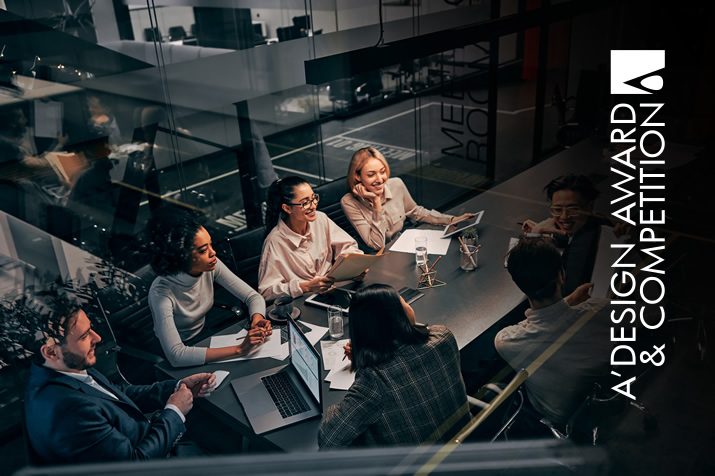
Pre-Submission Consultation for Intellectual Property
When preparing to submit your designs to the A' Design Awards, or any platform for that matter, the layers of intellectual property involved can be both intricate and overwhelming. Thus, engaging in a pre-submission consultation becomes not just advisable but, in many cases, essential. Here's a deeper dive into its benefits:
-
Expert Legal Advice:
Intellectual Property (IP) lawyers are trained to spot potential issues you might not be aware of. Their expertise can guide you on the nuances of copyrights, patents, trademarks, and other areas of IP. They can help clarify what rights you have, what rights you might be granting away, and how best to protect your designs.
-
Peer Review:
Engaging with design mentors or peers in your industry provides a unique perspective. They can share their own experiences, challenges they've faced, and how they've navigated IP concerns in the past. This collective wisdom can be invaluable. Be careful about not publishing your products not yet patented; doing so could create harm by limiting your ability to register patent.
-
Risk Mitigation:
Even a small oversight can lead to significant complications down the line, be it legal disputes or challenges to your design's originality. A pre-submission consultation acts as a preventive measure, ensuring you're safeguarded against potential pitfalls.
-
Understanding Platform-Specific Guidelines:
Each platform, including A' Design Awards, have its own set of guidelines and terms when it comes to submissions. A consultation can help ensure you're aligned with these specific requirements, reducing the chances of submission rejections or complications.
-
Cost Efficiency:
While there might be an upfront cost associated with seeking expert advice, in the long run, it can save you a significant amount. Think of it as an investment: by spending now, you could avoid expensive legal battles, rebranding costs, or redesigning later.
-
Ensuring Complete Rights Transfer:
If your design was a collaborative effort or involved third-party resources, the consultation will ensure that all involved parties have transferred their rights appropriately, leaving no room for disputes.
-
Confidentiality Concerns:
Especially with new and innovative designs, there's a risk of your ideas being copied or prematurely revealed. Professionals can guide you on how to maintain confidentiality, perhaps through Non-Disclosure Agreements (NDAs) or other protective measures.
Pre-Submission Consultation: If in doubt, it's always advisable to seek a pre-submission consultation. This could be with IP lawyers, design mentors, or even peers. A fresh set of eyes can sometimes identify potential IP pitfalls that you might overlook.
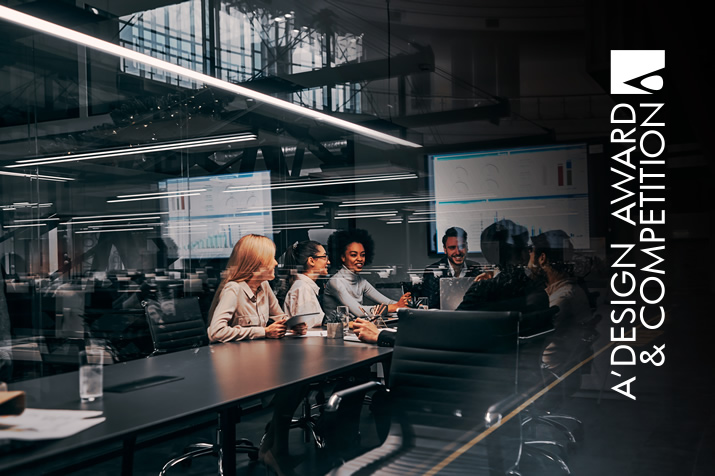
Safeguarding Trade Secrets in A' Design Award Submissions
When entering your work to A' Design Awards, it is essential to ensure your innovative designs do not inadvertently expose sensitive trade secrets. Especially for those employed at a company, be vigilant about inadvertently revealing trade secrets when showcasing your design. What seems like a minor detail to you might be a business-critical secret to your employer. Here's a refined guide to help you tread cautiously, by following these steps, you can confidently present your work at the A' Design Awards, ensuring both its brilliance and confidentiality remain intact.
-
Image Scrutiny: Begin by meticulously reviewing every image associated with your submission. Ensure no trade secrets or confidential information is inadvertently depicted or referenced.
-
Opt for Concealed Categories: If there's lingering uncertainty about the contents of your design, consider submitting to our concealed categories. While these categories maintain discretion by not publicizing results, keep in mind that your designs will remain visible to our discerning panel of jurors.
-
Seek Employer's Review: To further safeguard your interests and those of your employer, it's prudent to share and review your submission with your superiors or relevant department before finalizing the upload. Their perspective might illuminate potential areas of concern.
- Platform & Medium Sensitivity: The manner in which your design will be showcased (e.g., VR presentations, 3D print models, interactive demos) might introduce unique IP concerns. It's essential to think about the implications of your design being viewed, interacted with, or even reverse-engineered through certain mediums.
- Prototyping Materials: If your design includes physical prototypes, the materials or processes you've used might be proprietary or have specific usage rights. Confirm that you have the freedom to use and showcase them without restrictions.
- Feedback and Iterations: Remember, prior to the final design, there might have been feedback or iterations from colleagues, mentors, or other external parties. Ensure you've accounted for, and have the rights to, all such inputs in your final submission.
For innovations demanding unprecedented security, A' Design Award further offers an elite On-Site Voting in Remote Secure Facility Service that can be ordered from our Account Services. This premium option enables evaluation of ultra-sensitive designs in a Sensitive Compartmented Information Facility (SCIF) or client-designated secure location, with zero digital footprint and minimal data retention. Perfect for government-level projects, revolutionary technologies, or highly confidential innovations, this service combines manual voting procedures, client-selected qualified jurors, and stringent protocols to ensure absolute confidentiality while still enabling prestigious award recognition. A' Design Award's exceptional On-Site Voting in Remote Secure Facility Service goes beyond standard Concealed Category protection, offering a level of security suitable for projects where unauthorized disclosure could have significant implications, while maintaining the integrity and prestige of A' Design Award evaluation.
Disclaimer: The information provided on this page is intended for general understanding and guidance only and does not constitute legal advice or counsel. Users of this information should not consider it a replacement for professional legal advice regarding intellectual property or any other related matters. We strongly recommend consulting with a qualified intellectual property lawyer or attorney before taking any actions related to your trade secrets or designs. This information is provided "as is" and "as available", without representations or warranties of any kind.
|



 A' Design Award Intellectual Property Overview
A' Design Award Intellectual Property Overview


















